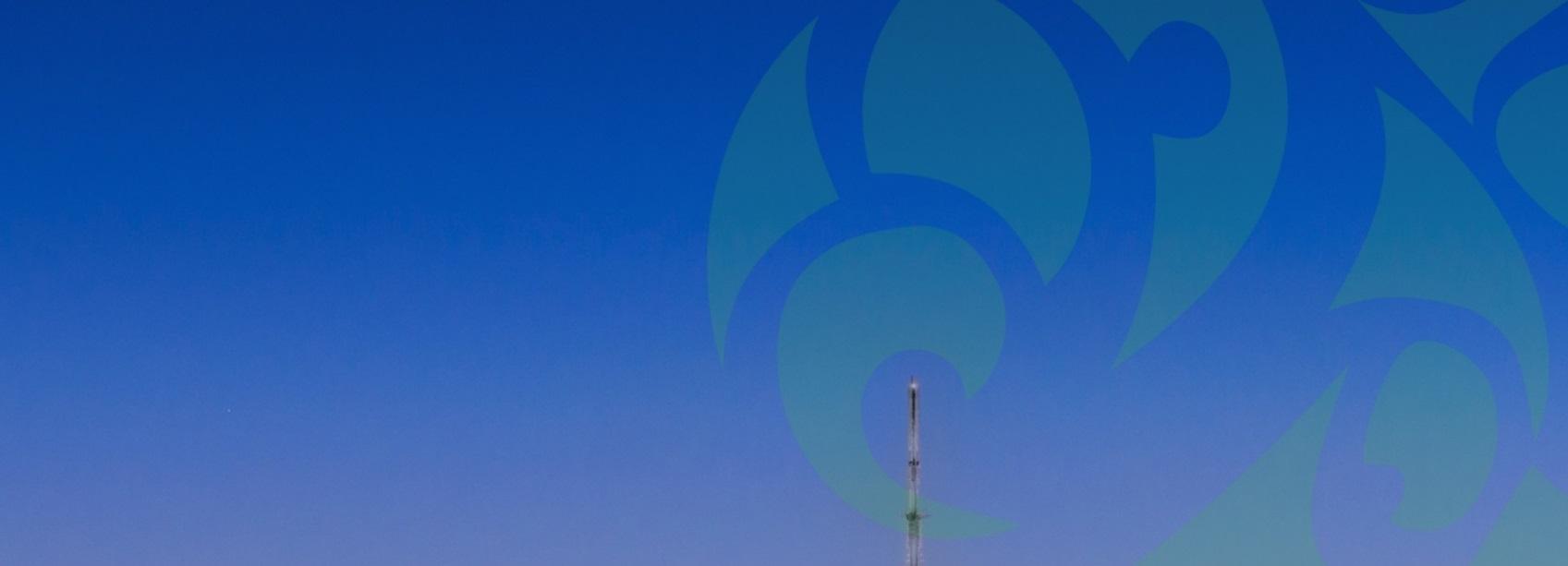


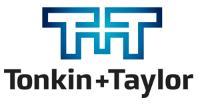
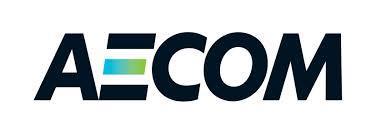
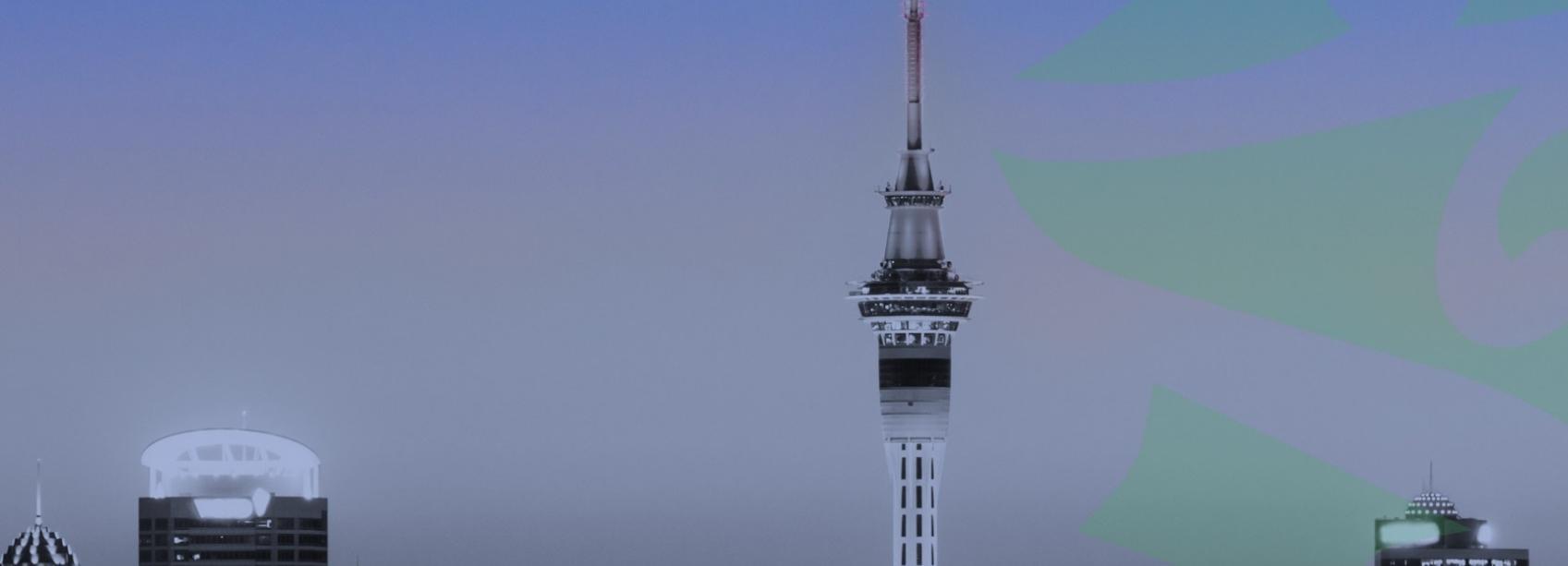
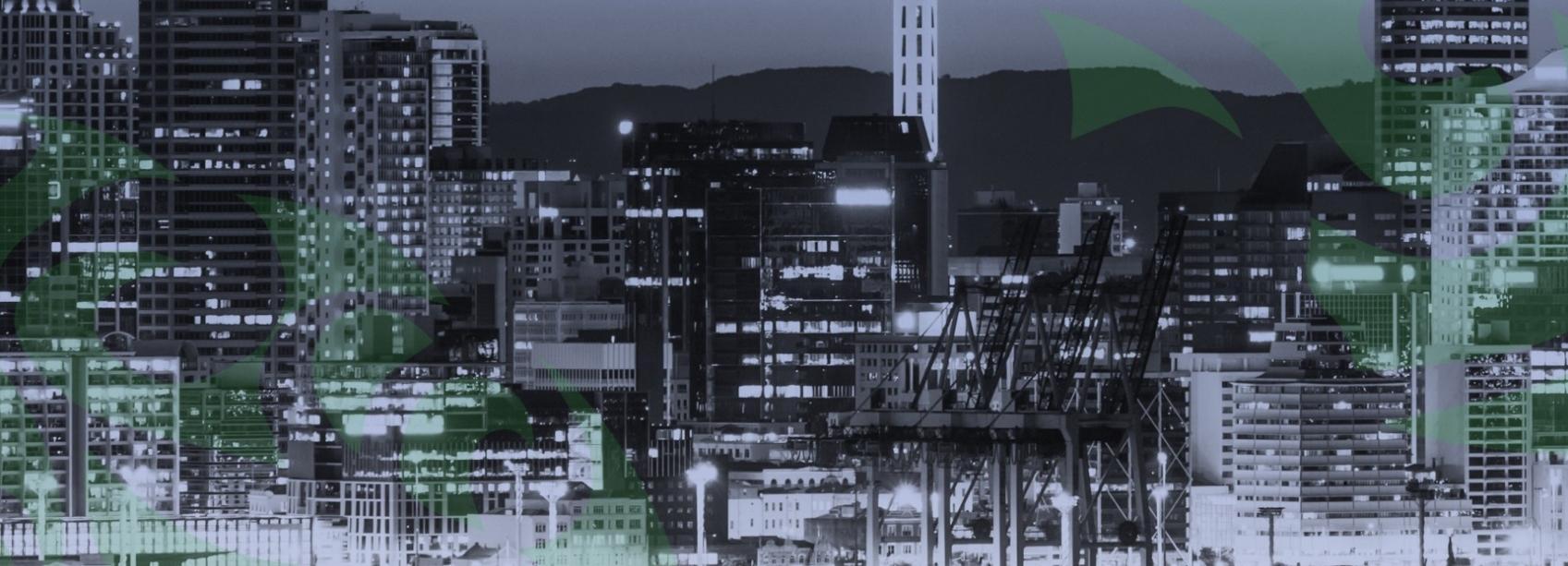
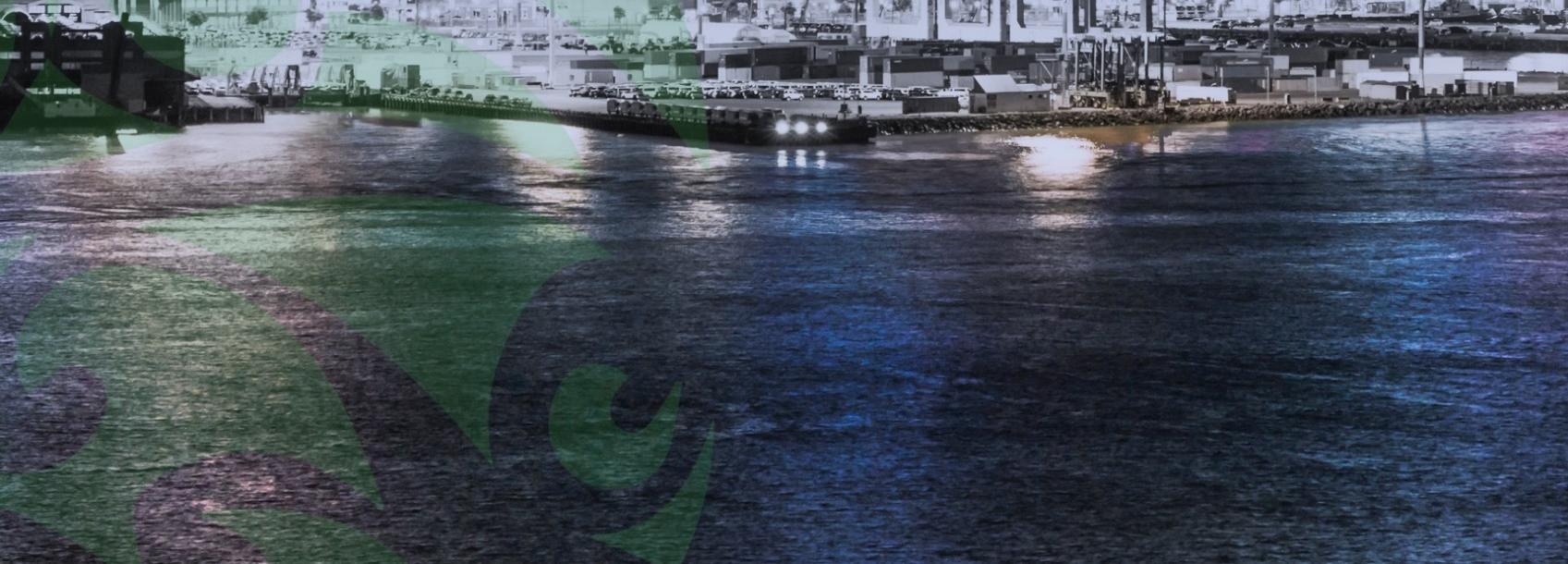
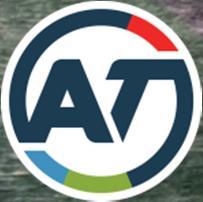










This document remains the property of DSBJV. Its contents are confidential and shall not be reproduced, destroyed or given away without express, written permission of DSBJV. The electronic version of this document in FULCRUM on designated serves(s) is the Master Copy and is a controlled document. Unless specifically noted, thereon, other copies of this document are uncontrolled.
\\albtpfile.ttgroup.local\data\rep\auckland\live\tt\projects\30850\30850.0500 planning\30850.0506 (public art)\issueddocuments\final 30 june 2016\crl-btm-env-dow-pln-000364 public art rev 9 - final.docx
Acronym Definition
AT Auckland Transport
BTC
CEMP
CPO
Britomart Transport Centre
Construction Environmental Management Plan
Former Chief Post Office building
CRL City Rail Link
DWP
QEII Square
Delivery Work Plan
Queen Elizabeth II Square
The City Rail Link (CRL) project comprises the construction, operation and maintenance of a 3.4 km underground passenger railway, running between Britomart Station and the North Auckland Rail Line in the vicinity of Mt Eden station. The works relating to this Public Art Delivery Work Plan (DWP) constitute part of the enabling works for the CRL.
The works (the Project) involve the construction of an extension to the existing passenger rail network from the current termination point within the Britomart Transport Centre (BTC), westwards underneath the former Central Post Office Building (CPO) and lower Queen Street. The Project footprint is shown by the blue shaded area in Figure 1.1 below.
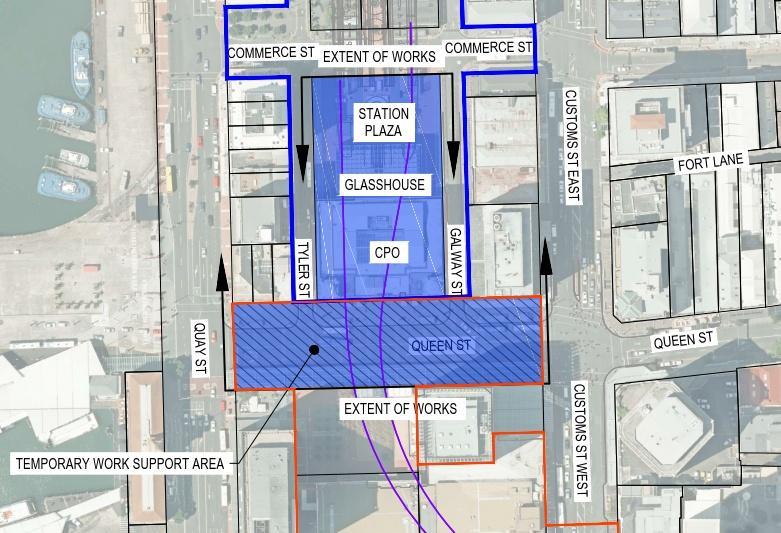
LEGEND
CRL alignment
BTC designation
CRL designation
C1 worksite
This Public Art DWP has been prepared to manage the adverse effects of constructing the CRL on public art located within or in close proximity to the Project footprint. A Public Art DWP is required under Condition 56 of the CRL designation and Condition 32 of the BTC designation.
The objective of the Public Art DWP is to enable the appropriate removal or relocation of public art directly affected by construction of the Project.
Redevelopment of the Downtown Shopping Centre site, including construction of the CRL rail tunnels beneath the site, will require the removal of Te Ahi Kaa Roa (also known as ‘Enduring Fires’) from its current location within Queen Elizabeth II (QEII) Square. The Maori Warrior, located on the corner of Quay Street and lower Queen Street, is outside the Project footprint. The Project works within the BTC will require the removal of the bluestone basalt waterfalls, the forest of stainless steel trees, and the ‘After the Irish Guards’ lightboxes in the pedestrian concourse.
The Public Art DWP outlines the following:
Public art located within or adjacent to the Project construction footprint; Management of public art impacted by the Project;
Consultation undertaken in relation to the management of public art impacted by the Project; and
Asset management of public art works impacted by the Project.
This DWP has been prepared by Tonkin & Taylor Ltd (T+T) for the Downer Soletanche Bachy Joint Venture (the Contractor - DSBJV) and forms part of the Construction Environmental Management Plan (CEMP) for the Project.
Table 1.1 identifies the designation conditions relevant to this Public Art DWP and where they are addressed in the document.
Table 1.1: Public Art DWP conditions and DWP section where addressed
Condition No.
Condition
City Rail Link Designation
CRL 56.1 A Public Art DWP shall be prepared to manage the adverse effects on public art located within or in close proximity to the designation footprint.
CRL 56.2 The objective of the Public Art DWP is to enable:
(a) The appropriate removal and / or relocation of one piece of public art directly affected by the construction of the City Rail Link;
(b) The protection of two pieces of public art that are located on public land in close proximity to the City Rail Link construction works.
Relevant section of DWP
This document
This document
CRL 56.3 To achieve the above objective the following shall be included in the Public Art DWP and implemented as required:
(a) The process that will be undertaken to remove the public art work known as "Enduring Fires" (at the time of the Notice of Requirement process located within Queen Elizabeth Square), including the consultation undertaken with the Auckland Council and Ngati Whatua ki Tamaki or Ngati Whatua o Orakei as to its removal, storage, re-establishment or relocation and / or replacement (as part of the restoration works associated with the City Rail Link construction);
(b) The process that will be undertaken to protect or remove the public art work known as "Maori Warrior" (at the time of the Notice of Requirement process located on the pavement of Quay Street adjacent to 1 Queen Street), including the consultation undertaken with the Auckland Council as to its protection during construction or whether it should be removed, stored, relocated and / or replaced (as part of the restoration works associated with the City Rail Link construction);
CRL 56.4 If one does not already exist, an asset management plan shall be prepared by the Requiring Authority in collaboration with Auckland Council for any of the above listed public art works as part of any protection or removal process.
CRL 56.5 Should the above public art works be removed from these sites prior and separate to the City Rail Link project, this condition will not need to be complied with.
Britomart Transport Centre Designation1
BTC 32.1A A Public Art DWP shall be prepared to manage the adverse effects on public art located within or in close proximity to the designation footprint.
Sections 4 - 5
Sections 4 - 5
Section 6
N/A
This document
1 Conditions as attached to Auckland Transport’s Confirmation Notice of 17 March 2016 on Notice of Requirement to alter Britomart Transport Centre Designation
Condition No. Condition
BTC 32.2 The objective of the Public Art DWP is to enable the appropriate removal and / or relocation of public art directly affected by the construction of the Project.
BTC 32.3 To achieve the above objective, included in the Public Art DWP shall be the process that will be undertaken to remove the public art, its storage, re-establishment or relocation and / or replacement (as part of the restoration works associated with the Project), including the consultation undertaken with the Auckland Council and proposed implementation
BTC 32.4 If one does not already exist, an asset management plan shall be prepared by the Requiring Authority in collaboration with Auckland Council for any of the public art works as part of any protection or removal process.
BTC 32.5 Should any public art works be removed prior to and separate from the Project, this condition will not need to be complied with.
Relevant
This document
Sections 4 - 5
Section 6
N/A
On completion of the Project, the affected streets and other public spaces (‘public realm’) will be reinstated in accordance with the Urban Design Delivery Work Plan (Urban Design DWP) for CRL.
The Urban Design DWP is still being developed by Auckland Transport. Amongst other things, the Urban Design DWP will identify the location of public art, including any re-siting or relocation of existing pieces of public art impacted as a result of the Project works.
The Project involves the construction of an extension to the existing passenger rail network from the current termination point within the BTC, westwards underneath the CPO Building and lower Queen Street. Separate works are being undertaken to continue the CRL tunnels from this point under the Downtown Shopping Centre site (which is being redeveloped by Precinct Properties), and up Albert Street.
The Project will involve significant works beneath the CPO, with the construction of two new tunnels extending westwards beneath the basement floor level. In lower Queen Street, sheet piling will be extended across the road corridor, excavation undertaken to form the tunnels followed by reinstatement of the road corridor following the completion of works. During construction, existing ticketing and retail functions and pedestrian access to the station will be accommodated in Station Plaza, at the rear of the CPO building.
Surface works will also be required in QEII Square associated with the Downtown Shopping Centre redevelopment, including construction of the CRL rail tunnels beneath this site (Precinct Properties scope of work).
A detailed description of the construction works is provided in the Project CEMP.
Table 3.1 identifies the public art works located within or in proximity to the BTC and CRL designation footprints. The location of these public art works is shown on Figure 3.1.
It should be noted that this Public Art DWP does not include those elements within the BTC that are considered by the Auckland Council Public Art Team to be ‘design elements’. Such features include the finely woven mesh within the BTC that references tuku panelling, and the volcanic cone light wells.
Table 3.1: Public Art located within or in proximity to the BTC and CRL designation footprints
Art Work Location
The forest of sculptured stainless steel trees
Artist: Michael Parekowhai, 2004
BTC Levels Basement 1 (B1) and Basement 2 (B2)
Description of Art Work
Forest of stainless steel trees with truncated, sawn-off limbs surrounded by a garden of real plants. The art is a monument to nature lost in the name of progress.
The trees range in height from 5 to 23 m. Their patterned steel surfaces were created using computer-scanned photos of the tree trunks of native kauri, totara and cabbage trees.
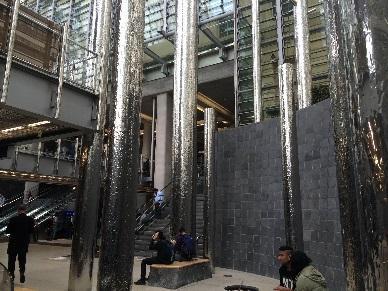
Stainless steel trees and basalt waterfall
This idea of the art being a monument to nature lost in the name of progress, is further reflected in the 18 kauri trees planted in QEII Square. These living trees provide a counterpoint to the stainless steel trees in the BTC Glasshouse space.
Bluestone Basalt waterfalls
After the Irish Guards
Artist: Michael Parekowhai, 2004
BTC Levels Basement 1 and Basement 2
Concourse between BTC and Lower Queen Street
Curved waterfalls backed with dark, fine-grained basalt volcanic rock and native plants on either side.
Refer to the picture above showing part of one of the basalt waterfalls, which are located behind the stainless steel trees. Note that the waterfalls are no longer in operation.
‘After the Irish Guards’ light works are located in the B1 concourse where they frame the entrance into the subway leading through from QE11 square.
The works are visible through the banking floor of the CPO via a circle cut where the original kiosks in the banking chamber were sited.
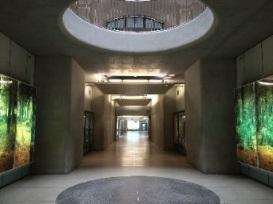

After the Irish Guards
Te Ahi Kaa Roa –Queen Elizabeth II Square
Te Ahi Kaa Roa represents continued tribal occupation, possession and guardianship of lands, waterways and taonga.
Art Work Location Description of Art Work Enduring Fires
Artist: Ngati Whatua, 2004
Warrior
Artist: Molly Macalister, 1967 Footpath on the corner of Quay Street and lower Queen Street
Te Ahi Kaa Roa references the idea that keeping the home fires burning is essential for the maintenance of mana (authority) and the right to occupy a place. Burning fires are a potent Maori symbol of connection and belonging to the land. The artwork lies in the centre of Queen Elizabeth Square and aligns with both the CPO and the volcanic cones.
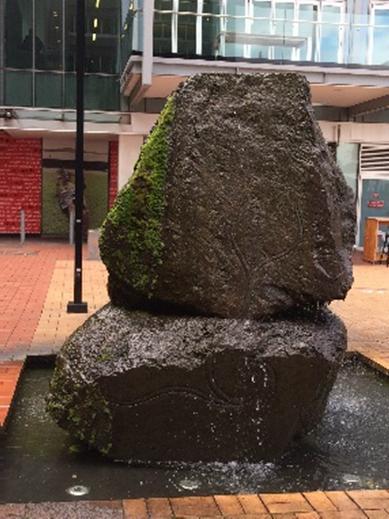
The 3m-tall bronze figure is enveloped in an artistic interpretation of a traditional Maori cloak.
The warrior looks to the horizon holding a mere, a symbol of peace, in his right hand. It was intended that the welcoming figure would seem to greet visitors and new settlers who, at that time, arrived on passenger liners that docked at the wharves in downtown Auckland.
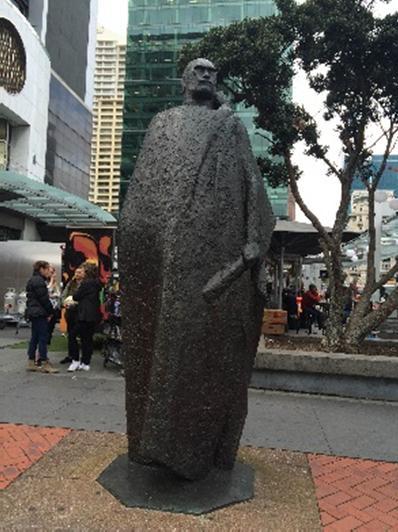
It should be noted that the Matahorua Anchor and The Tainui Anchor listed in CRL designation Condition 56.3(c) are located at the northern end of the Bledisloe Building on Wellesley Street and hence outside the Project footprint. Accordingly, these two pieces of public art are not discussed further in this DWP.

After the Irish Guards (BTC pedestrian concourse)
This section outlines the proposed management of public art during the construction works, and specifically the process that will be undertaken to remove, store and reinstate/re-site or relocate the individual art works impacted by the Project. The section also identifies the parties responsible for managing and implementing this process for the individual art works i.e. Auckland Transport or the Auckland Council Public Art Team, along with providing indicative timeframes for the removal and reinstatement/re-siting of the public art.
Table 4.1 provides a summary of the public art works impacted by the Project, and identifies the parties responsible for the management of individual art works.
Table 4.1: Summary of Art Work impacted by Project and Management Responsibility
Art Work Project Impact on Public Art Work
Forest of Stainless Steel Trees
Bluestone Basalt waterfalls
After the Irish Guards
Te Ahi Kaa Roa –Enduring Fires
Yes – within the BTC
Yes – within the BTC
Yes – within the BTC
Yes – while outside the Project footprint, Te Ahi Kaa Roa is located within the CRL designation footprint and will be impacted by redevelopment of the Downtown Shopping Centre site, including construction of the CRL rail tunnels beneath the site. The art work is to be managed through the provisions of the sale of Queen Elizabeth Square and the redevelopment of the Downtown Shopping Centre.
Party Responsible for Public Art Management and DWP Implementation
Proposed Management Strategy
Auckland Transport Removal Storage Reinstatement
Auckland Transport Removal Storage Reinstatement
Auckland Transport Removal Storage Re-siting
Auckland Council Removal Storage
Re-siting to be agreed with Mana Whenua
Maori Warrior
No – outside the BTC and CRL designation footprints and outside the zone of physical construction works by around 20 m.
Auckland Council
Not impacted by works
Further detail on the management of the Public Art Works within the Project area is outlined in Sections 4.1 - 4.5 below.
The Forest of Stainless Steel Trees will need to be removed from the BTC during the construction works, stored and reinstated following the completion of the works. Management of the removal, storage and reinstatement of the Forest of Stainless Steel Trees, along with engagement with the artist and the Auckland Council Public Art team, is the responsibility of Auckland Transport.
A summary of the proposed methodology for the removal, storage and reinstatement of the Forest of Stainless Steel Trees is outlined below. This methodology has been developed in consultation with the Auckland Council Public Art team and the artist’s representative. The methodology will be confirmed with the artist (or artist’s representative) prior to the art work being removed.
It should be noted that the 18 kauri trees planted in QEII Square, which provide a counterpoint to the stainless steel trees in the glasshouse space, will be removed as part of the Downtown Shopping Centre redevelopment and construction of the CRL rail tunnels beneath this site (Precinct Properties scope of work).
The removal of the Forest of Stainless Steel Trees will occur at some point in time during the period July – October 2016.
During removal of the art work, the artist, or their appointed representative, will be on-site to supervise the removal process in order to minimise any impacts on the work.
The proposed methodology to remove the 16 columns, all less than 22 metres in height, from Basement 2 of the BTC is as follows:
a Install scaffolding to the top of each column.
b Manually remove the top section of each column and separate from the lower section. Place removed section in excavator bucket (lined with cushioning) and lower to the ground where it will be placed on a trolley and transported to storage.
c Cut exposed stainless steel skin down to a manageable lengths of 2 metres, strop with the excavator, lift and lower to ground level. Label all casing with the pole and section details. Transport to truck for storage.
d Complete above steps until the bottom section of the column is reached and stainless steel skin removed. Note that the bottom foam-filled section of column is to be left intact.
e Remove steel casing and break out the base of each pole with a gas axe if required, ensuring the bottom skin is wrapped/protected against damage.
f Strop casing with the excavator and gas axe the base of the casing. Once cut free, lift the casing onto a trolley and transport to storage.
The above process will be undertaken concurrently on a number of columns.
The proposed methodology to remove the three remaining larger columns (approximately 22 metres in height) from Basement 2 of the BTC is as follows:
a Establish crane with man-cage attachment at northern end of the glasshouse, outside of the glasshouse. Remove glass louvers from the glasshouse.
b Access the column via the man-cage and strop column with auxiliary hook.
c Cut the column at 2 metre intervals using a gas axe. Use the crane to lift the cut section of column and place it at ground level or lower the cut section to Basement 2. Place the cut section on a trolley and transport it to a truck for storage.
d Method repeated until column removed.
4.1.1.2
The proposed methodology to remove the eight columns from the BTC Basement 1 level is as follows:
a Install scaffolding to the top of each column.
b Manually remove the top of the stainless steel skin.
c Relocate the crane from Basement 2 to Basement 1 and use the small skip attached to the crane to lift the skin to Basement 1. Load the skin onto a trolley and transport to storage.
d Gas axe the casing using the process outlined for the Basement 2 art works. Strop the crane to the steel casing and remove the cut sections through the glasshouse louvers. Load the sections onto a truck and transport to storage.
e Repeat the above process until the bottom foam filled section of the column is reached.
f Strop the column to crane and gas axe the base of the column to free the last section. Lift and transport the section to storage. Alternatively, if the bottom of the pole cannot be accessed, break out the surrounding concrete slab and cut off the steel casing below ground level.
All Removed stainless steel skins will be boxed up and packed with polystyrene billets and likely stored securely in the upper floors of the CPO building or a secure off-site AT storage facility during the construction period until the artwork is reinstated towards the end of the Project (refer to Section 4.1.3). The storage location will be confirmed prior to the removal of the stainless steel trees. Should the skins be stored in the CPO building, engagement will be undertaken with the CPO long-term lessee – Cooper and Company, in this regard.
The removed stainless steel casing will be securely stored at a designated AT storage facility during the construction period until the art works is reinstated towards the end of the Project. AT will be responsible for the storage of the art work during the construction phase of the Project.
Reinstatement (in a reconfigured arrangement) of some of the Stainless Steel Trees within the BTC B1 and B2 levels will be undertaken as part of the BTC reinstatement works. Due to the westward extension of the new rail tunnels within the BTC, it will not be practicable to reinstate all of the Stainless Steel Trees and in the current configuration.
Reinstatement will be undertaken at some point in time from late 2019 through to early 2020, with the process managed by Auckland Transport in consultation with the artist or their appointed representative.
Reinstatement of the art work will likely be undertaken in reverse order of the removal methodology outlined in Section 4.1.1 above, following the completion of the enabling works. The reinstatement methodology will be confirmed with the artist, or artist’s representative, prior to the works being undertaken.
Four of the bluestone basalt waterfalls will need to be removed from the BTC Basement 1 and 2 levels during the Project works, stored and then reinstated following the completion of the works. Management of the removal, storage and reinstatement of the Bluestone Basalt Waterfalls, along with engagement with the artist and the Auckland Council Public Art team, is the responsibility of Auckland Transport.
A summary of the proposed methodology for the removal, storage and reinstatement of the art work is outlined below. This methodology has been developed in consultation with the Auckland Council Public Art team and the artist’s representative and will be confirmed with the artist (or their representative) prior to the art work being removed.
4.2.1
The removal of the Bluestone Basalt Waterfalls from Basement 1 will occur at some point in time during the period October to November 2016 while the walls from Basement 2 will be removed in late 2019 to early 2020.
During removal of the art work, the artist, or their appointed representative, will be on-site to supervise the removal process in order to minimise any impacts on the work.
The proposed removal methodology is as follows:
a Install scaffolding to the face of the wall (note that for the waterfalls that extend between BTC Basements 1 and 2 scaffolding will be installed after the bottom section of the temporary evacuation stairs have been removed).
b Start removal of the wall from top corner of wall.
c Demolish two tile squares to gain access to back of tile fixings.
d Pry tiles one by one from one side of the wall to the other until all tiles are removed.
e Demolish block backing wall. Saw cut the wall in manageable sections. Lift the cut sections of the wall out of the glasshouse onto a truck for recycling.
The tiles will be appropriately stored during the construction works until the art work is reinstated towards the end of the Project. Specifically:
a Tiles from the wall will be lowered down from scaffold and placed on pallets in the BTC Basement 1 level (for the wall from the ground floor to Basement 1) and Basement level (for the wall extending from Basement 1 to 2).
b Use trolley to transport the tiles to the upper level of the CPO building for storage. Alternatively, pallets to be stored at a designated AT facility.
Reinstatement of the Bluestone Basalt Waterfalls will occur in the first half of 2020 as part of the BTC reinstatement works. Reinstatement will likely be undertaken as follows:
a All tiles are to be preserved and reinstated at the end of the works as per the existing arrangement.
b For the wall between Basement 1 and Basement 2, once the CRL rail tunnel penetrations are completed, the wall will be realigned to accommodate the new rail tunnels (with a gap in the wall in this area).
The pedestrian concourse that extends beneath Basement 1 of the BTC and Lower Queen Street is being demolished as part of the Project. The ‘After the Irish Guards’ lightboxes will be removed from their current location within the concourse. Management of the removal, storage and reinstatement of the lightboxes, along with engagement with the artist and the Auckland Council Public Art team, is the responsibility of Auckland Transport.
A summary of the proposed methodology for the removal, storage and reinstatement of the lightboxes is outlined below. This methodology has been developed in consultation with the Auckland Council Public Art team and the artist’s representative. The methodology will be confirmed with the artist (or artist’s representative) prior to the art work being removed.
4.3.1
Removal of the ‘After the Irish Guards’ lightboxes will occur in April or May 2016 following the closure of the BTC pedestrian concourse between the station and QEII Square, prior the commencement of the main CRL Britomart enabling works.
The methodology for removal of the lightboxes is as follows:
a Each light box will be isolated from the electrical supply.
b The picture panels will removed, cleaned, bubble wrapped, flat packed and stacked on a pallet.
c The frames and back light electrical components will be removed protected, wrapped and packed into crates.
d The removed components will be transported off-site.
4.3.2
The light box components will be stored securely in the upper floors of the CPO building or in a designated Auckland Council or Auckland Transport storage facility until such time that they are resited. The storage location will be confirmed prior to the removal of the light box components. Should the light box components be stored in the CPO building, engagement will be undertaken with the CPO long-term lessee – Cooper and Company, in this regard.
4.3.3
The light boxes will be re-sited to a suitable location as agreed between the artist (or artist’s representative), Auckland Council and Auckland Transport.
All light box components will undergo a thorough check and refurbishment, as required, prior to reinstallation.
The Maori Warrior is located outside the CRL and BTC designation boundaries and the Project footprint. The Maori Warrior will be approximately 20 m from the physical construction works in lower Queen Street and not adversely affected by the proposed construction works. Accordingly, no specific management or protection of the Maori Warrior is required during the works.
4.5
As outlined in Section 3 of this Public Art DWP, Te Ahi Kaa Roa is located within the CRL designation. While outside the Project works footprint, Te Ahi Kaa Roa will need to be removed to enable construction of the Downtown Shopping Centre redevelopment, including construction of the CRL rail tunnels beneath this site. Management of the removal, storage and potential re-siting of Te Ahi Kaa Roa, along with engagement with the artist and mana whenua, is the responsibility of the Auckland Council Public Art Team.
A summary of the proposed methodology for the removal and storage of Te Ahi Kaa Roa is outlined below. This methodology has been developed in consultation with the Auckland Council Public Art team and the artist’s representative. The methodology will be confirmed with the artist (or artist’s representative) prior to the art work being removed.
4.5.1
Removal of Te Ahi Kaa Roa was undertaken in May 2016.
During removal of the art work, the artist, or their appointed representative, was on-site to supervise the removal process in order to minimise any impacts on the work. A summary of the proposed removal methodology is as follows:
a Disconnect and isolate existing services including gas, water and power located in the underground pump room that connect to Te Ahi Kaa Roa.
b Remove the fountain and gas flare fittings from the top basalt boulder.
c Insert steel wedges or packers into the gap between the two boulders.
d Use a wire saw to cut through the steel anchor bars that extend between the top and bottom basalt boulders.
e Strop and lift the top boulder off the bottom boulder in accordance with the Te Ahi Kaa Roa crane lift plan.
f Place removed boulder securely on a storage pallet or in a storage crate.
g Remove the service pipework from the top boulder.
h Repeat items e) through to g) from the above methodology in order to remove the bottom boulder.
i Water blast and clean the removed boulders.
j Water pump and associated equipment to be crated and placed onto waiting truck.
k Crane the storage pallets or crates containing the removed boulders onto a waiting truck.
l Transport the boulders and water pump to a designated Auckland Council Parks Department storage facility.
4.5.2
Te Ahi Kaa Roa will be stored in safe keeping at a designated Auckland Council Parks Department storage facility until such time that a suitable location for the resitting of Te Ahi Kaa Roa is confirmed. The Auckland Council Public Arts team will be responsible for the management of Te Ahi Kaa Roa for the storage duration.
4.5.3
The Auckland Council Public Art team will manage the re-siting of Te Ahi Kaa Roa, inclusive of consultation with the artist and mana whenua, in particular Ngati Whatua ki Tamaki or Ngati Whatua o Orakei, and any physical re-siting works.
In accordance with CRL designation conditions 56.3(a) and 56.3(b) and BTC designation condition 32.3, AT has consulted with Auckland Council with respect to the management of public art during the Project works. A summary of the consultation undertaken is provided below.
AT has consulted with Auckland Council on the management of public art impacted by the Project as outlined in Table 5.1.
Engagement Matters Discussed
Various meetings in late 2015/early 2016 regarding the management of the Forest of Stainless Steel Trees
Meetings with Kim Martinengo (Auckland Council Public Art Project Co-ordinator) and artist’s representative regarding the management of the Forest of Stainless Steel Trees in the BTC during the Project works. Meetings discussed:
The proposed methodology for the removal, storage and reinstatement of the art work
Storage locations for the art work - the Auckland Council Public Art Team advising the DSBJV as to suitable locations.
Configurations for the reinstated art work –unlikely that all the trees will be reinstated due to the location of the new rail tunnels in the BTC.
Artist involvement in the management of the Forest Stainless Steel Trees in order to minimise effects on the art work.
Construction programme.
Various meetings in late 2015/early 2016 regarding the removal and management of Te Ahi Kaa Roa
Meetings with Peter Tilley (Auckland Council Public Art Collections Manager), Kim Martinengo (Auckland Council Public Art Project Co-ordinator) regarding:
The management of Te Ahi Kaa Roa including:
- the proposed methodology for the removal of Te Ahi Kaa Roa
- storage location and method – custom built crates likely required for the transport and storage of Te Ahi Kaa Roa
- future re-siting of the art work following the completion of the CRL enabling works, which is being led by the Auckland Council Public Art Team
- artist involvement in the management of Te Ahi Kaa Roa
The management of the Maori Warrior, which will not be affected by the Project.
Construction programme.
Various meetings in
Meetings with Kim Martinengo (Auckland Council Public Art Project Co-ordinator) regarding:
Outcome/DWP Implementation
Meeting informed management strategy for the Forest of Stainless Steel Trees, including the removal, storage and reinstatement methodology outlined in Section 4.1 of this Public Art DWP.
Meeting informed the relocation methodology and storage of Te Ahi Kaa Roa outlined in Section 4.5 of this Public Art DWP.
Meeting also confirmed that the Project works will be sufficiently set back from the Maori Warrior, hence protection of this art work is likely not required
Meeting informed management strategy for the ‘After the Irish
Engagement Matters Discussed Outcome/DWP Implementation late 2015/early 2016 regarding the management of the Lightboxes (‘After the Irish Guards’)
Various meetings in late 2015/early 2016 regarding the management of the Bluestone Basalt Waterfalls
The proposed methodology for the removal, storage and reinstatement of the lightboxes. Storage locations for the art work – likely to be the upper levels of the CPO.
Artist involvement in the removal of the lightboxes in order to minimise effects on the art work.
Construction programme.
Meetings regarding:
The proposed methodology for the removal, storage and reinstatement of the waterfalls. Storage locations for the art work.
Artist involvement in the removal of the waterfalls in order to minimise effects on the art work.
Construction programme.
Guards’ lightboxes, including the removal and storage methodology outlined in Section 4.3 of this Public Art DWP.
Meeting informed management strategy for the waterfall, including the removal, storage and reinstatement methodology outlined in Section 4.2 of this Public Art DWP.
Auckland Transport undertook some initial engagement with mana whenua with respect to the management of Te Ahi Kaa Roa, as part of the permanent design of the public realm once CRL has been constructed. As the Auckland Council Public Art Team are responsible for the management of Te Ahi Kaa Roa, following removal of the art work from QEII Square, further engagement with mana whenua will be led by the Public Art team.
The Auckland Council Public Art Team has prepared an Asset Management Plan for Te Ahi Kaa Roa (refer to Appendix A of this DWP). The Plan outlines the future operational and maintenance requirements for this art work, which is the responsibility of the Auckland Council Public Art Team. The Asset Management Plan will be reviewed and following agreement with mana whenua in relation to the re-siting of Te Ahi Kaa Roa.
Specific asset management plans are not required for the art works in the BTC, which are addressed under the provisions of wider Britomart Station operations and management plans.
This Public Art DWP has undergone a review process with the Community Liaison Group (CLG) established for the Project and a suitably qualified independent peer reviewer. An explanation of how any comments from both the CLG and Peer Reviewer have addressed is provided in Appendix B.
This DWP will be reviewed throughout the course of the Project:
a To reflect material changes associated with changes to construction techniques, the natural environment or due to unresolved complaints; and
b As part of the annual management review of the DWP.
The management review of the DWP will be undertaken at least annually by the Project Management team and the AT representatives. The management review will be organised by the Environmental and Sustainability Manager and the Project team will be informed of any changes to this DWP through the regular Project communications processes. The review will take into consideration:
Compliance with the designation or consent conditions, the CEMP, DWPs and EMPs (including site specific plans) and material changes to these plans.
Any significant changes to construction activities or methods.
Key changes to roles and responsibilities within the Project team.
Changes in industry best practice standards.
Changes in legal or other requirements (social and environmental legal requirements, consent conditions, AT objectives and relevant policies, plans, standards, specifications and guidelines).
Results of inspections, monitoring and reporting procedures associated with the management of adverse effects during construction.
Comments or recommendations from Auckland Council regarding the CEMP, DWPs and EMPs. Unresolved complaints and any response to complaints and remedial action taken to address the complaint.
The process for updating this DWP as a result of a material change to the Project or the annual review, is as follows (refer to CRL designation Condition 23 and BTC designation Condition 22 for further information):
Any material change to this DWP must be consistent with the purpose and objective of the relevant conditions listed in Table 1.1 of this document.
Affected parties and the CLG must be notified of the review and any material change proposed to this DWP.
This DWP must clearly document the comments and inputs received from affected parties in relation to any material changes, along with a clear explanation of where any comments have not been incorporated, and the reasons why not.
Any material change proposed to this DWP shall be subject to an independent peer review as required by CRL Condition 11.
Any material change proposed to this DWP relating to an adverse effect shall be submitted for approval to Auckland Council Compliance and Monitoring Officer, at least 10 working days prior to the proposed changes taking effect. If any changes are not agreed, the relevant provisions of the RMA relating to approval of outline plans shall apply.
A copy of the original Public Art DWP document and subsequent versions will be kept for the Project records, and marked as obsolete. Each new / updated version of the Public Art DWP documentation will be issued with a version number and date to eliminate obsolete Public Art DWP documentation being used.
A summary of the review process will be provided annually to Auckland Council and otherwise be made available on request.
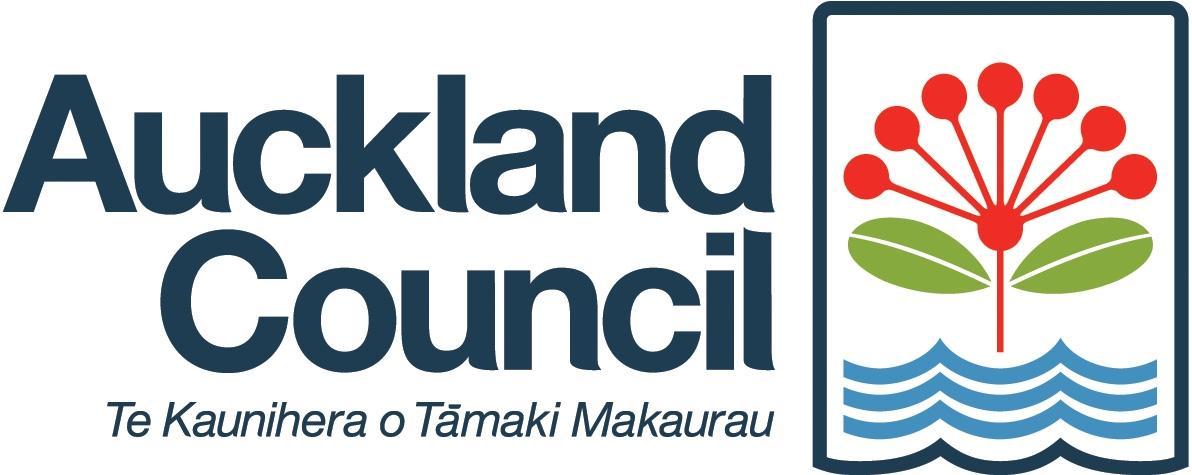
To be filled out by the project manager of the project. When completed, print this form and all attachment for Asset Manager.
Question Answer
1) Name of the artist (first name, last name)
Ngati Whatua Orakei
2) Title of the work (as on the plaque) Te Ahi Kaa Roa
3) Date unveiled or installed (day, month, year) 2004
4) Location (attach map and/or GPS location and/or Geospacial info)
5) Ownership
(who will own the work once complete or who is the current owner)
Auckland Council Arts Collection
6) Project name Britomart Station streetscape works
7) Source of the work (gift/commission, plus details of previous owners/dates of ownership if known)
Include relevant attachments: If commission: Artists Contract If purchase: Receipt If gift: Deed of Gift If loan: Loan Agreement
8) Project cost
Include all relevant budget sources and a total project cost of production
9) Artwork credit line (e.g.: Donated by the family of xxx)
Commissioned as part of the Britomart suite of works
Budget: $200,000
10) Three images minimal ready for publication
(thumbnails of works here, can be different from publicity images)
11) Credit line for photographs (eg: Photographs courtesy of the artist, or Photo by J. Simms)
12) Description (litteral: what do you see, eg: stylized female shape carved out of sandstone)

13) Description of the subject matter
(story behind the work)
14) Construction materials (materials the work is made of)
2 carved basalt stones stacked vertically in a water pool, a constant flame emitting from the top of the boulder stack
The sculpture Te Ahi Kaa Roa represents continued tribal occupation, possession and guardianship of lands, waterways and taonga by Ngati Whatua ki Tamaki. Ngati Whatua have been the customary owners of the Tamaki Makau Rau (Auckland) Isthmus for several centuries. They established Auckland City by inviting Governor Hobson to share the land with them in 1840 gifting over 16,000 acres for this purpose.
Te Ahi Kaa Roa references the idea that keeping the home fires burning is essential for the maintenance of mana (authority) and the right to occupy a place. Burning fires are a potent Maori symbol of connection and belonging to the land.
The fire in this work is literal and it erupts from the base material, basalt. Ngati Whatua identifies basalt as the local stone that is integral to its culture and upon which society is grounded. The stone is of Papatuanuku, the Earth Mother and is enduring and immovable. The water represents life and the sea-bed taken from the Waitemata River in early Auckland reclamations.
Local basalt, gas fire, water, stainless steel, carving, artificial lighting
15) Plinth/foundation/base construction materials Recessed tiled pool

16) Components 2x basalt boulders
17) Potential risks / graffiti prevention
18) Dimensions: height, width, depth, weight.
19) Storage space particulars
(how big is the box it will fit into, how sturdy the storage space needed)
20) Colours
(paint colour numbers & makes)
Low risk of graffiti and low risk to public
2600mm x 2000mm x 2000mm
Custom pallet for 2x
21) Installation/deinstallation/transport requirements
(include details like screw types, special tools, and include images)
Work to be removed by the Downer Soletanche Bachy Joint Venture (DSBJV) during the CRL Britomart Enabling Works (Colin McKenzie or Dale Burtenshaw, DSBJV to manage)
Gas and water supplies to be disconnected
Removal of gas burner and pilot light assembly
Removal of water manifold
Cut through sealant, water / gas pipes and dowels connecting the 2 basalt boulders
Crane lift / remove top boulder
Place on custom pallet
Cut through sealant, water / gas pipes and dowels at a bottom base of bottom boulder
Crane lift / remove bottom boulder
Place on custom pallet
To be transported to Parks storage facility (Contact Joe Standen, operations manager, city parks +64 27 216 1756)
Removal of pump gear (H20 have maintenance contract contact Scott Mccullough, scott@h2osystems.co.nz
Pump gear to be crated and shipped to parks facility as above
22) Construction details (as built drawings, patterns etc)
23) Recommended maintenance regime (what) and schedule (when)
(care of components as lighting, pumps, hydraulics, wood and how many times a year)
24) Producer statements / Certificates of compliance
25) Stakeholder/supplier list
26) Any other comments:
27) Other essential documents for Asset Manager
(eg valuations, budgets, resource/building consent documents, comments)
Attachment Checklist

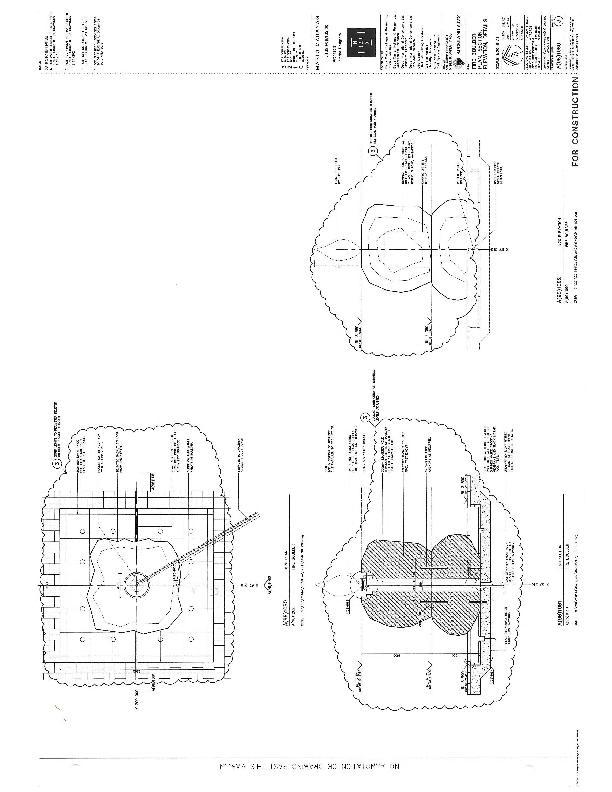
Weekly cleaning of water feature, filters etc, water tests and replacement of water treatment chemicals.
6 monthly service of pumping gear
Lighting maintained as required
H20 Scott Mccullough, Maintenance for Te Ahi Kaa scott@h2osystems.co.nz
Metro Parks: David Millward, Operations Manager
DSBJV: Dale Burtenshaw, Project Director
Ngati Whatua Orakei: Mei Hill,Kaitiaki Toi - Art & Cultural Design
Work will be decommissioned/ removed by the DSBJV in March 2016 and trucked to the designated Auckland Council Parks depot for storage Contact: Joe Standen

Comments received from the CLG are as follows:
Date CLG Member
14th April 2016 Cooper and Company
Comment
Section 4.1.2 states that the stainless steel skins for the forest of stainless steel trees will be boxed up and stored in the upper floors of the CPO and says similar for the bluestone basalt waterfall tiles (Section 4.2.2).
Cooper and Company would like to understand exactly what is being proposed for the upper levels of the CPO given the investment they have made in that building.
Should also clarify that this storage, if it is to occur, is only during construction.
14th April 2016 Cooper and Company Section 7 notes that any material changes to the DWP will require approval from Council. However it should also note that any material changes also need to be notified to the CLG under condition 8.7.
18 May 2016 Cooper and Company
Section 4.3.2 states that the Irish Guards lightboxes will be stored in a designated AC or AT facility until they are re-sited. However, table 5.1 states that they are “likely to be” stored in the upper levels of the CPO. If this is the case we would like a similar provision put into section 4.3.2 to mirror that in section 4.1.2 (which relates to the stainless steel skins) and which requires engagement with Cooper and Company should storage occur within the upper levels of the CPO
Response
Additional text included in Section 4.1.2 regarding the storage of the stainless steel trees in the CPO during the construction phase of the Project.
Section 7 updated with new subsections on the review and updating process, including CLG notification.
Text added to Section 4.3.2 requiring consultation with Cooper and Company should the Irish Guards lightboxes be stored in the upper levels of the CPO.
An Independent Peer Review of the draft Public Art DWP was undertaken by Julia Scott, with peer review comments received on 1st February 2016. The comments received are as follows:
Reference Comment Response
General Comments
Responsibility The DWP generally does not specify who is responsible for decisions or implementing actions within the plan. In particular, Sections 4 and 5 it is not clear who is
Additional text included in Section 4 of the Public Art DWP in relation to responsibility for the management of
Reference
Comment
responsible for managing and resolving differences and issues arising from ongoing consultation, making decisions and implementing the DWP.
It seems likely that the actions to implement the DWP will be carried out by contractors and it is unclear who will be responsible for letting and supervising those contracts.
Response
the individual public art works impacted by the Project.
Timeline
Contractual Arrangements
The DWP needs to be well developed in terms of contract and construction timetables, particularly given a potential May 2016 contract start, so that any decisions and actions made relating to removal, re-instatement or relocation can be included in relevant design and construction plans and contracts. How is it intended to plan and manage the overall timeframe to implement the DWP? Timely planning for the future location and relocation of affected artworks is a key part of the overall purpose of the Public Art DWP.
It is not clear when critical decision points occur within the DWP for sign off of the DWP and interface with signoffs with principal plans and contracts.
How will the Public Art DWP timeline be managed to ensure the co-ordination of relevant aspects related plans?
In relation to Te Ahi Kaa Roa, potentially the most contentious re-siting, when are the critical decision points within the DWP to ensure public art requirements are incorporated into the plans and contracts relating to the Project?
The DWP indicates that Auckland Council’s public art team will manage some aspects of the re-siting of affected artworks. The basis for implementing contractual arrangements with and/or via Auckland Council Public Art team is not specified but should be.
If decisions made relating to the future location of Te Ahi Kaa Roa have implications for the contract with Precinct Properties or others, how will they be incorporated into the contract(s) and how will compliance with the DWP be ensured?
Contractual arrangements are not relevant to the scope of this Public Art DWP, or required by the Project designation conditions.
Additional text included in Section 4 of the DWP around the removal and reinstatement of the individual public art works.
Contractual arrangements are not relevant to the scope of this Public Art DWP, or required by the Project designation conditions.
The Auckland Council Public Art team will manage the process around the re-siting of Te Ahi Kaa Roa and this is outside the scope of this DWP.
Information pertaining to contractual agreements is not required by the Project designation conditions and is not relevant to the scope of this DWP.
Budget
There is no mention in the plan of a budget for the DWP and which organisations will fund each component
Information pertaining to funding for the removal, storage and reinstatement of public art is not
Reference
Comment
Response action. A budget is a fundamental component ofany well-developedplan. It is unclear which entity has responsibility to plan, review, implement, monitor and review the budget and make budget--related decisions for the full cycle ofthe DWP (removal, storage and reinstatement/relocation).
The DWP should make this clear to ensure clarity and accountability.
required by the Project designation conditions and is not relevant to the scope of this DWP.
Risk
The DWP does not identify risks and issues in implementing the DWP or indicate how it is planned to manage them.
Sections 1.1 & 1.2
CRL 56.3 (b)
Maori Warrior was specifically named in the CRL Designation Conditions. While it is just outside the immediate footprint it is in very close proximity to anticipated significant project construction activity. Have the risks of unintended damage been sufficiently addressed to protect Maori Warrior?
Risk management in relation to public art removal, storage or reinstatement is not required by the Project designation conditions.
Additional text included in Section 4.4 regarding the location of the Maori Warrior in relation to the construction works, and hence why physical protection is not currently proposed. It is noted that if the construction works were to extend closer to this art work, then consideration of physical protection may be required.
Section 1.3 How will the Public Art DWP will be integrated with the Urban Design DWP and who isresponsible formanaging and co-ordinatingthis? Have the implications, dependencies and timelines been discussed with the Urban Design DWP team?
The Public Art DWP should address how this will be achieved.
Table 3.1 Is this list complete? E.g., Do the live Kauri trees in Queen Elizabeth Square and lighting wells also form part of Michael Parakowhai’s concept?
Maori Warrior and Matahorua Anchor and Tainui Anchor are specified in the CRL Designation Conditions.
Maori Warrior --- Refer to comment made in Reference 1.1 above in this table.
For consistency, it should also be noted that Matahorua Anchor and Tainui Anchor are outside the footprint of works.
Section 4.1 Forest of The removal and storage methodologies proposed also have implications for
Auckland Transport is responsible for preparation of the Urban Design DWP and the integration of public art into the public realm design. The Urban Design DWP is currently being prepared by AT.
The Auckland Council Public Art Team have advised that the light wells are a design element within BTC and are not considered public art for the purposes of this DWP.
Only conditions relevant to the Project area are included in Table 1.1 – no reference to the Matahorua and Tainui Anchors is required
Additional text included in Section 3 of the DWP (under Table 3.1) to reference the Matahorua and Tainui Anchors
Matters around logistics and costs are not relevant to the scope of this DWP
Reference
Comment
Stainless Steel Trees future reinstatement feasibility, logistics and costs.
The removal methodology outlined (4.1.1.) does not appear to have been confirmed with the artist and Auckland Council. Who will be responsible for managing and resolving any conflicting advice arising from this consultation and should any issues arise during removal. Who has responsibility for decision--making?
Whowill responsible forimplementing and managingthe removal, re--instatement/relocation? Who is responsible to put the contractual arrangements in place?
The DWP process should be clear about the process for implementation and delivery for the full cycle of the required work.
Response
Additional text included in Section 4.1 around responsibility for the management of the Forest of Stainless Steel Trees. The Project designation conditions do not require the Public Art DWP to include a disputes resolution process.
Additional text included in Section 4 in relation to management responsibility. Contractual arrangements are not relevant to the scope of the DWP.
The full management strategy is already addressed in the DWP.
Section 4.1.2 Storage
Section 4.1.3 Reinstatement
The DWP should address how any changed requirements, including timeline extensions and budget, will be managed resulting from consultation with the artist, Mana Whenua and Auckland Council.
This section is not developed in sufficient detail and in particular there are no cost estimates, or funding responsibilities outlined. Additionally it appears to assume that no changes will be made as a result of consultation with the artist and or Auckland Council?
Similar comments as for 4.1. How will any conflicts of advice and changes be managed and incorporated into the DWP? The DWP should address how this will be dealt with and managed.
This information is not relevant to the scope of the DWP.
Cost and funding responsibilities are not relevant to the scope of the DWP.
Section 4.2 Bluestone Basalt Waterfall
This description is not consistent with the previous section’s similar introduction (4.1) where the artist or representative is also on site to supervise the removal process.
Similarly, has the removal methodology been discussed with the artist and Auckland Council in relation to any feasibility and cost implications for reinstatement? And how will any conflicts be resolved and managed? The DWP should demonstrate a consistent approach unless there are specific reasons not to.
As per above response to comment in Section 4.1 above.
Additional text included in Section 4.2 regarding artist involvement.
The Project designation conditions do not require the Public Art DWP to include a disputes resolution process.
Cost implications are not relevant to the scope of this DWP.
Reference
Section 4.3
After the Irish Guards
Section 4.3.3
Resitting
Comment
This section does not include any reference to involvement of the artist. As previously noted in 4.1, the DWP should demonstrate a consistent approach unless there are specific reasons not to.
How this will be implemented is unclear. How will the relocation process be managed, who will be responsible for budget and decision---making? How will the re---siting be integrated with the development and timing of the Urban Design DWP and public realm design?
The DWP should address how this will be dealt with in more detail in order to provide a clear process for implementation.
Response
Additional text included in Section 4.2 regarding artist involvement.
Section 4.4 Maori Warrior
Section 4.5 Te Ahi Kaa Roa
Section 4.5.3
Re-siting
See previous comment (Reference 1.1. in this table).
This section does not include any reference to involvement of the artist.
As previously noted, the removal of the Forest of Sculptured Stainless Steel trees introduction (4.1) includes the artist or representative confirming the removal methodology and being on site to supervise the removal process.
The DWP should be clearer about how this removal and relocation will be planned and implemented.
The re-siting ofthis work is potentially the mostcontentiousissuewith both political and operational risks. While consultation with Mana Whenua is described in Section 5 neither section provides a plan for implementation. The impact of these decisions on financial responsibilities and contractual arrangements shouldbe addressed.
E.g. who is responsible for resolving differences and issues arising during consultation and for making decisions that impact on AT’s relationship with Mana Whenua, Precinct Properties and associated contracts for this work.
How will contractual arrangements be managed with Auckland Council relating toengagingsuitablesupplierstoremove, storeandre-siteaffected artworks. Is it planned to agree terms of reference or similar and will contractors be subcontractors to AT’s main contractor or
Budget and decision making aspects are not relevant to the scope of this DWP.
Refer to comment under section 1.1 of this table.
Additional text included in Section 4.5 regarding artist involvement.
The potential re-siting of Te Ahi Kaa Roa is being led and managed by the Auckland Council Public Art Team separately to this DWP, hence it is not relevant to the scope of this DWP
Reference Comment Response
will Auckland Councilcontract suppliers separately?
Given the significance of the work and its current location to Mana Whenua, responsibility for decisions about its relocation should be dealt with in the plan.
The DWP should address more clearly how it plans to implement the re-siting of this work.
Section 5.1
Auckland Council
The stated outcomes ofon---goingliaison are insufficient to provideaclear plan of how the project will be delivered. It is not clear from the plan how this section and Section 4 will be integrated, implemented and who is responsible for decisions about outcomes of the consultation with Auckland Council and how any conflicts of advice will be dealt with. Responsibilities, timelines and decision---making processes are generally not clear.
Further work is required to provide a plan to articulate how implementation of consultation outcomes will be achieved.
Additional text included in Table 5.1 regarding implementation and consultation outcomes.
Additional text included throughout Section 4 of this DWP to address responsibilities in relation to the management of the individual public art works and project timelines for removal and reinstatement of the individual art works.
Section 5.2
Mana Whenua
Appendix A: Management Plan for Te Ahi Kaa Roa
This section summarises what has happened so far but does not provide a plan for delivery. The listed outcomes are insufficient to show what you intend to do to integrate and then implement the outcomes of consultation with Section 4.
For example: Who is responsible for decisions about outcomes of the consultation with Auckland Council and how any differences or conflicts of advice will be dealt with and when do critical timeline dates occur?
How willdecision---making andassociated costsinleading themanagementTe Ahi Kaa Roa removal, storage and relocation be managed?
Who is responsible and how will co--ordination with the Urban Design DWP be maintained during the delivery process?
The DWP should address how this will be dealt with.
The document provided as Appendix 1 is titled “Project Completion Form”. The document title is confusing.
Section has been re-worded to outline that the Auckland Council Public Art Team are responsible for the management of Te Ahi Kaa Roa and all further engagement with mana whenua in this regard.
Document title changed to ‘Te Ahi Kaa Roa – Asset Management Plan’
A further Independent Peer Review of the draft Public Art DWP was undertaken by Julia Scott to review the amendments made to the DWP as a result of Auckland Transport’s confirmation of the altered BTC designation conditions. A second round of peer review comments was received on 16th May 2016. The comments received are addressed as follows:
Reference Comment Response
General Comments
Responsibility The changes made to and additional text incorporated into Revision 6 of the DWP provide a clearer plan of the intended process to manage the removal, storage and re--siting of the affected public artworks. This includes greater clarity around responsibilities, timelines and consultation implementation and outcomes within the project scope.
Clarity on design elements and artwork within the project scope of work
Revision 6 of the WP makes it clear what artwork is within project scope but outlining what has been agreed to be ‘design elements’, such as the finely woven mesh within the BTC and the volcanic cones, and what is being treated as artwork. Revision 6 also clarifies that removal of the 18 kauri trees in Queen Elizabeth II Square, a counterpoint to the stainless steel trees artwork, will be managed within the (Precinct Properties scope of work). It clarifies that that the Matahorua and Tainui Anchors listed in CRL Condition 56.3(c) are located outside the project footprint and that management of and responsibility for Maori Warrior was duly considered in developing the DWP.
DWP Review and Updating
Section 7 DWP review and updating
Appendix B: CLG and Independent Peer Review
The expansion of Section 7 to include ongoing review, updating and monitoring of the DWP is beneficial and will enable more effective integration and implementation the DWP during the course of the Project.
I note CLG Review comments and changes made to the revised DWP document. I also note Auckland Transport’s responses that my questions and points raised relating to the impact of contractual arrangements, cost, budget and risk relating to removal storage and reinstatement are outside the scope of the DWP or not required by the Project designation conditions. Auckland Transport states these aspects are outside the remit for this DWP scope of work and I presume that they are being fully addressed elsewhere your planning processes.
Noted. No amendment required.
Noted. No amendment required.
Noted. No amendment required.
The matters are being appropriately addressed elsewhere. No amendment required.